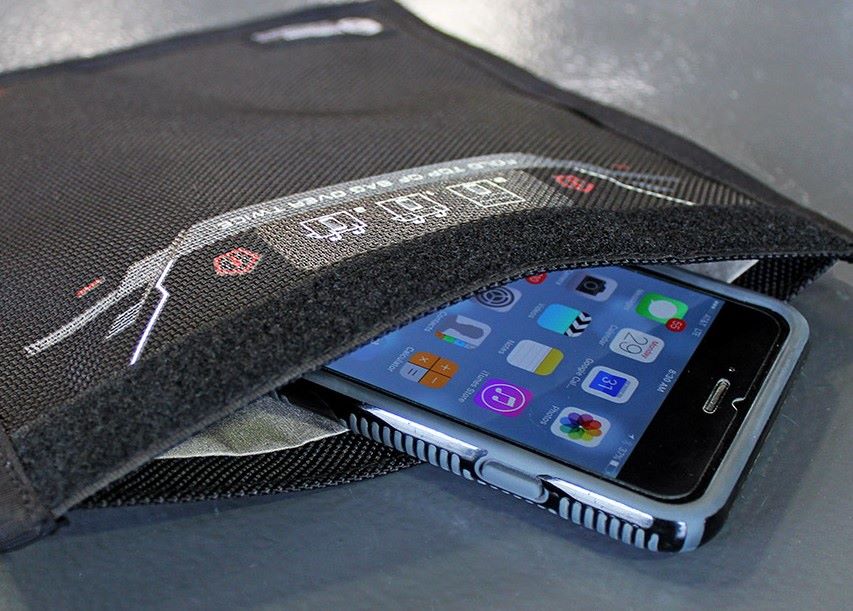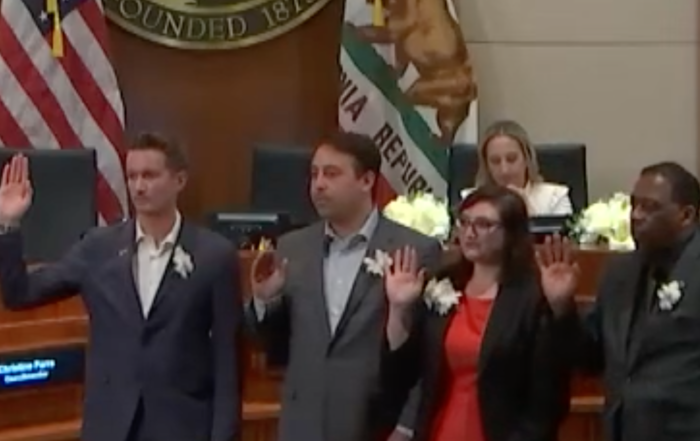Phone-free schools are on the horizon for the Los Angeles Unified School District (LAUSD), where the district is rolling out a new phone policy that will be in effect in a few months.
In February 2025, all LAUSD schools will have implemented a system for keeping students off their smartphones while on campus. The move puts LAUSD well ahead of the curve in California.
In June, the LAUSD board passed a resolution to make the district phone-free. In August, California passed AB 3216, the Phone-Free Schools Act, which requires all school districts in the state to implement some policy to limit or prohibit phone usage in schools by July 2026.
L.A. Unified’s new phone policy builds on the district’s current policy with important amendments and more district cohesion on implementation. Notably, the district will also make time outside of the classroom phone-free. Lunchtime, recess, and any time students are moving about between class periods will soon be times when students are not allowed to reach for their phones.
There are some exemptions to the policy. Students will have access to their phones during emergencies if access is a medical necessity (e.g. diabetic students using a phone application to track their insulin levels), or if it is required for a student’s individualized education program (IEP).
The district has had a no-phone policy on the books for years. Under the current policy, students are not allowed to use their phones during instruction time. Despite the policy, the ubiquitous smartphone has fundamentally damaged the way students relate to school, each other, and themselves, proponents of a phone-free policy say.
Principals at schools that have been phone-free for years said the difference is remarkable.
“Our students turned into kids again,” Principal Darvina Bradley of Dymally High told board members on Tuesday. Students started talking to each other and playing games during free time. Her school’s phone-free stance has required some creativity from staff to recapture students’ attention, but the effort has been worthwhile.
Part of the transition to phone-free schools lies in making sure students will have something to do when they can’t idly scroll. Another part is reworking school systems so personal devices aren’t a necessity throughout the day.
In some schools, students need a personal device to buy lunch at the cafeteria. QR codes are abundant, and internal school communications are delivered through personal devices. Principal Kim D’Alosio of Holmes Middle said the school also had to limit tablet usage, finding students were using their school-supplied tablets to do the same things they would on their phones.
If other schools follow suit, this might temper the usefulness of tech-forward initiatives in the district, some of which have been criticized recently. The district’s fealty to data extraction and collection to tackle systemic issues has not always delivered the anticipated benefits.
It’s unclear how the district will reconcile these tech projects with the new policy.
One thing is certain, all of this will require time and enthusiasm from schools to make the transition successful. What this looks like for each school will differ.
LAUSD’s plan for implementing phone-free schools has been fine-tuned by community input, a process which will continue over the next few months as individual schools choose how they will adhere to the district’s new phone policy. School governance boards, including school principals, staff, parents, and students, will decide which route to take by December 13.
Here are the options proposed by the district: Students can have their phones turned off and stored in their backpacks, in a moveable cubby, in a magnetically sealed pouch, in a velcro-sealed pouch, or in a phone storage chart where students can deposit their phones upon entering the classroom.
Each system has potential benefits and drawbacks. Some are more appropriate for younger students who are unlikely to figure out how to circumvent the simpler solutions. Some are no-cost or low-cost, but others would come at a higher price.
The district has committed $7 Million to fund the one-time purchases of phone storage devices or systems.
The limited budget prompted School Board Member Nick Melvoin to speak up. Melvoin represents much of West L.A. and authored the June resolution. If the district only pays for a one-time purchase of the more expensive solutions, he said, schools might be disincentivized to opt for the route that would be most effective for their students.
While it seems that everyone agrees that smartphones are to blame, the district has faced some opposition from parents and staff over the implementation of the new policy.
Staff were largely supportive of the policy according to feedback the district sought out from its labor partners. However, staff did want more clarity on who exactly would be responsible for ushering in the phone-free era. There doesn’t seem to be one answer for that. Rather, it will necessitate a collaborative effort between teachers, administrators, families, and students.
The district hopes that by having all stakeholders involved in school-site discussions, everyone will be invested in the new policy’s success.
One outstanding barrier to parent approval of the policy is school safety. California’s Phone-Free Schools Act requires that students have access to their phones in an emergency. Andres Chait, the district’s School Operations Chief, said the state did not define what “emergency” meant, leaving it largely to the district’s discretion.
Chait also added that access to phones during an emergency did not mean that students would be able to call or text their families as an emergency was occurring, saying that teachers would allow students access to their phones only if it was safe and appropriate to do so.
While L.A. Unified schools have safety plans in place, Chait conceded that processes for communicating with families have not been uniform. As it stands, schools that are on lockdown for more than ten minutes are supposed to send out a message to all families about the lockdown and update them when appropriate. That doesn’t always happen. Some parents have told the district they will encourage their students to violate the new policy because of safety concerns.
Chait said each school needs to comply with district standards on communications about lockdowns or other incidents to families.
“I’d hope and expect that our families are not relying on communications from their kids to know whether their kids are safe or not,” Chait said. “They should be relying on us.”
MIC85, CC BY-SA 4.0, via Wikimedia Commons
Stay informed. Sign up for The Westside Voice Newsletter
By clicking submit, you agree to share your email address with Westside Voice. We do not sell or share your information with anyone.








